20 THINGS WE LEARNED ABOUT RACING A SUZUKI RM-Z250
Click on images to enlarge
Racing a 2017 Suzuk RM-Z250 is fun. The bike has an agile and loose feel that brings lots of joy to hammering laps. However, it is slow. How slow? The slowest o fall the 250 four-strokes made in 2017. On big hills, an RM-Z250 is dead meat against a YZ250F, KX250F, KTM 250SXF or Husky FC250. We went all out to keep what we liked and fix what we didn’t. Oh well, you win some and you lose some. Here are the 20 steps we took.
1. ENGINE. The RM-Z250’s engine is the slowest on the showroom floors. It is down on every part of the horsepower curve compared to its competition. It’s actually worse than it sounds. The RM-Z250 is 6 peak horsepower below the two Austrian bikes in stock trim. Our first mission with our RM-Z250 was to pump up the power without breaking the bank. We gave the engine to Dasa Racing. Dasa Racing’s goal was to make more peak power and allow the engine to rev out longer to pull the following gear better. Dasa did some head work, degree’d the cams and put a JE high-compression piston in. To keep the project under budget, Dasa remapped the stock ignition. The power became much broader on top and revved to the moon, but it lost any excitement it had. It would work great on the Bonneville salt flats, but not a motocross track. Dasa had the engine know-how but was lacking the expertise on the mapping.
2. MAPPING. We consulted with Jamie Ellis, who is a mapping guru. He told us the best thing to do was to buy a GET or Vortex ignition for the bike. It would make a huge difference in the RM-Z’s potential, but neither of those black boxes are cheap, and we didn’t want to throw good money after bad. Instead, we had Jamie remap the stock ignition for both fuel mixture and ignition timing. What a huge difference. The bike went from a dud to a stud. It made better power across the board and had a peppy midrange feel.
3. EXHAUST. Our goal was to find more mid- to top-end power. The stock RM-Z250 exhaust is good off the bottom but lacks any pep after that. We used a Bill’s Pipes exhaust. Bill has years of experience with Suzukis. His pipe cost us some bottom but gained mid and top. It was a step in the right direction.
4. CLUTCH. The RM-Z250 clutch is its weak link. It fades really fast, likes to creep on the starting line and engagement is very close to your fingers. It needed to be beefed up for the added power. We tried stiffer springs but eventually opted for a full Wiseco clutch. Why? The Wiseco clutch basket has a lifetime warranty. This gave us the durability we were looking for as well as an improved feel on the track. We left the stiffer clutch springs to add to the grip.
5. SUSPENSION. We liked the RM-Z250’s Kayaba PSF-2 low-pressure forks in stock trim, but we wanted them to stay higher in their stroke without having to rely on increased air pressure. We let Factory Connection iron out our valving. Factory Connection set up the front and rear for a 175-pound intermediate rider. The fork’s stroke was plusher without losing any bottoming resistance. The shock balanced well with the forks and gave the chassis a more planted feel.
6. ADJUSTABILITY. We stuck with the stock triple clamp offset but did switch to Ride Engineering triple clamps for their handlebar adjustability. We were able to move the bars forward for taller riders and back for smaller riders.
7. GEARING. The easiest way to get more oomph in the midrange is to add teeth to the rear sprocket. We went from a 50-tooth to 51-tooth Renthal rear sprocket.
8. FRONT BRAKE. Why does the heaviest bike have the weakest front brake? It was a no-brainer to beef up the pucker power with a 270mm Moto Master front brake rotor kit.
9. WHEELS. We wanted long-lasting durability for our wheels. We put the stock wheels on the shelf for a rainy day and mounted a full set of Tusk wheels. These wheels are bulletproof and very affordable.
10. HEAD-SHAKE. The RM-Z250 turns on a dime but shakes at speed. You can’t eliminate the problem and still keep the killer cornering, but you can put a band-aid over it. The first thing the MXA test riders do is tighten down the steering stem nut, which is a poor man’s steering damper. If you still experience head-shake, try sliding the forks farther down in the clamps to slacken the frame’s head angle. If you still can’t find satisfaction, swap the stock 21.5mm offset clamps for Ride Engineering’s 22mm offset clamps.
 11. CLUTCH PERCH. We have always loved the feel and release point of the Works Connection clutch perch, so we threw it on. The stock Suzuki perch and lever seem flimsy in comparison.
11. CLUTCH PERCH. We have always loved the feel and release point of the Works Connection clutch perch, so we threw it on. The stock Suzuki perch and lever seem flimsy in comparison.
12. CHAIN. The RM-Z250’s stock chain is junk. It was a no-brainer to put on a Renthal 520 chain.
13. HOSES. The CV4 radiator hoses make for a much simpler design. They cut out hose clamps and make removing and installing the hoses much easier.
14. GEARBOX. In stock trim, neutral is hard to find. We got the gearbox tumbled for smoother shifting, and that also made neutral easier to locate.
15. CHAIN SLIDER. At 11 hours we wore through the RM-Z250’s chain slider. We should have invested in a TM Designworks chain slider at the start of our project. Next time, we will make it a priority.
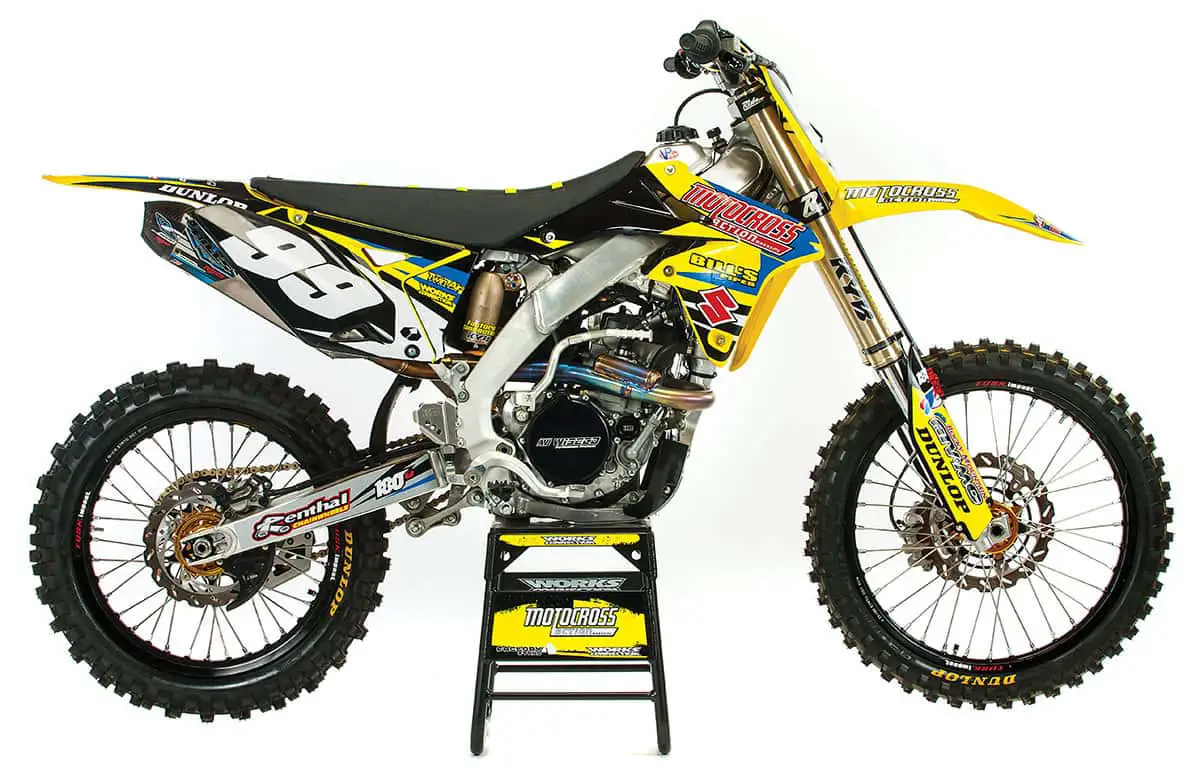 16. COUPLERS. There are two optional couplers that come with the bike. The white coupler is the lean (aggressive) coupler. The gray coupler is the rich (mellow) coupler. The stock setting is no coupler at all. MXA always uses the white (lean) coupler, because this engine needs all the help it can get.
16. COUPLERS. There are two optional couplers that come with the bike. The white coupler is the lean (aggressive) coupler. The gray coupler is the rich (mellow) coupler. The stock setting is no coupler at all. MXA always uses the white (lean) coupler, because this engine needs all the help it can get.
17. GAS. After much trial and error, we found out what fuel works and what fuel doesn’t work on the RM-Z250. We got the most horsepower out of VP Pro 6. It gave the RM-Z250 a 3-horsepower boost on the dyno. Unfortunately, race gas is expensive horsepower when you have to buy it by the gallon.
18. THROTTLE BODY. Most of the 250 teams use a KTM throttle body on their bikes instead of the one that comes stock. It has its injector nozzle at the bottom of the venturi. It costs $350 to replace.
19. AIRBOX. Drilling holes in the right-hand side of the airbox not only improves power but also allows you to pass the AMA 2-meter sound test easier. The sucking noise from the opened-up airbox drowns out the exhaust sound. This allows you to run a louder exhaust because the sucking noise doesn’t travel as far as the exhaust note.
20. FRONT TIRE. We have never cared for the Dunlop MX52 that comes stock on the RM-Z250. We changed it out for our favorite Dunlop MX3S.



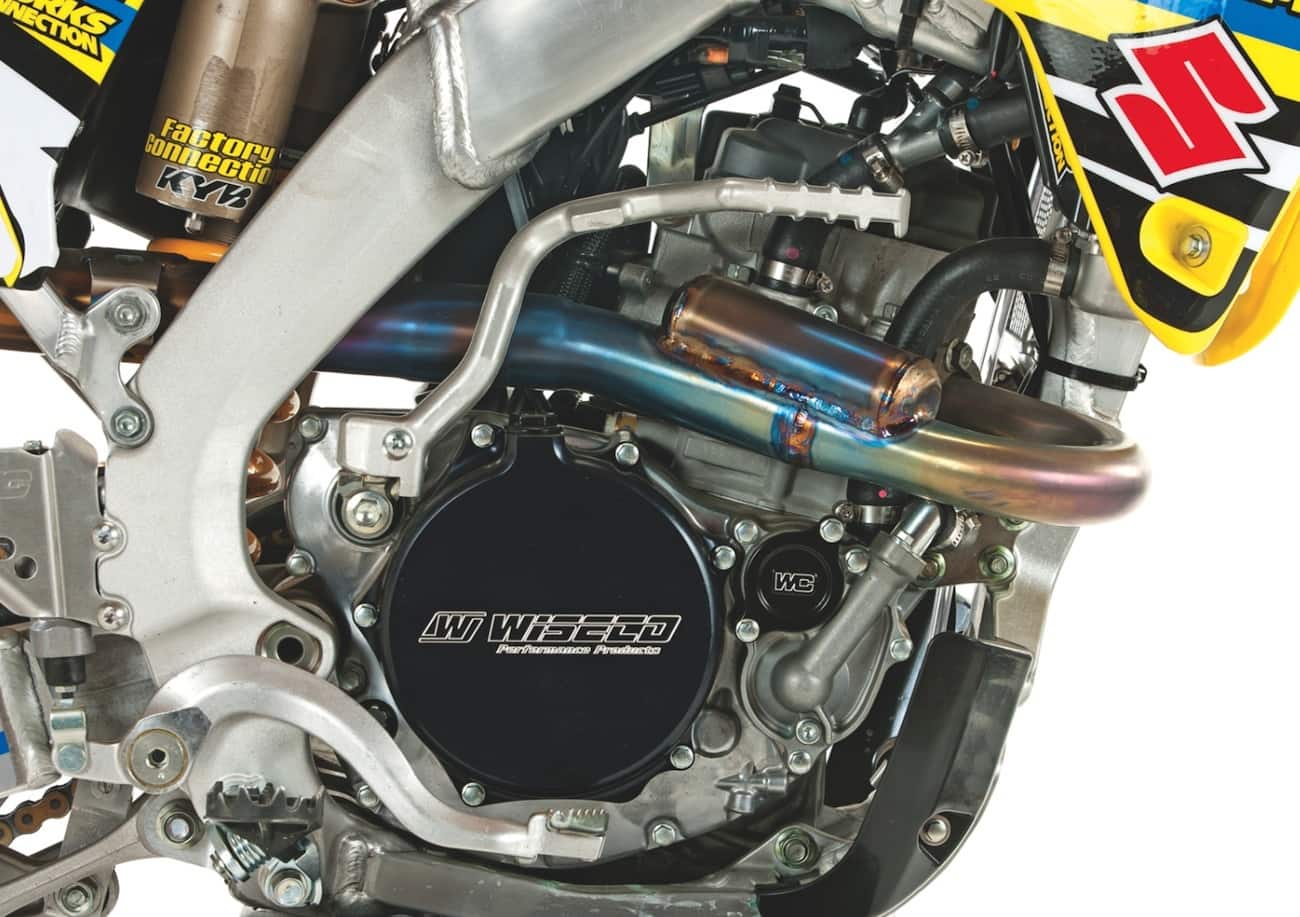

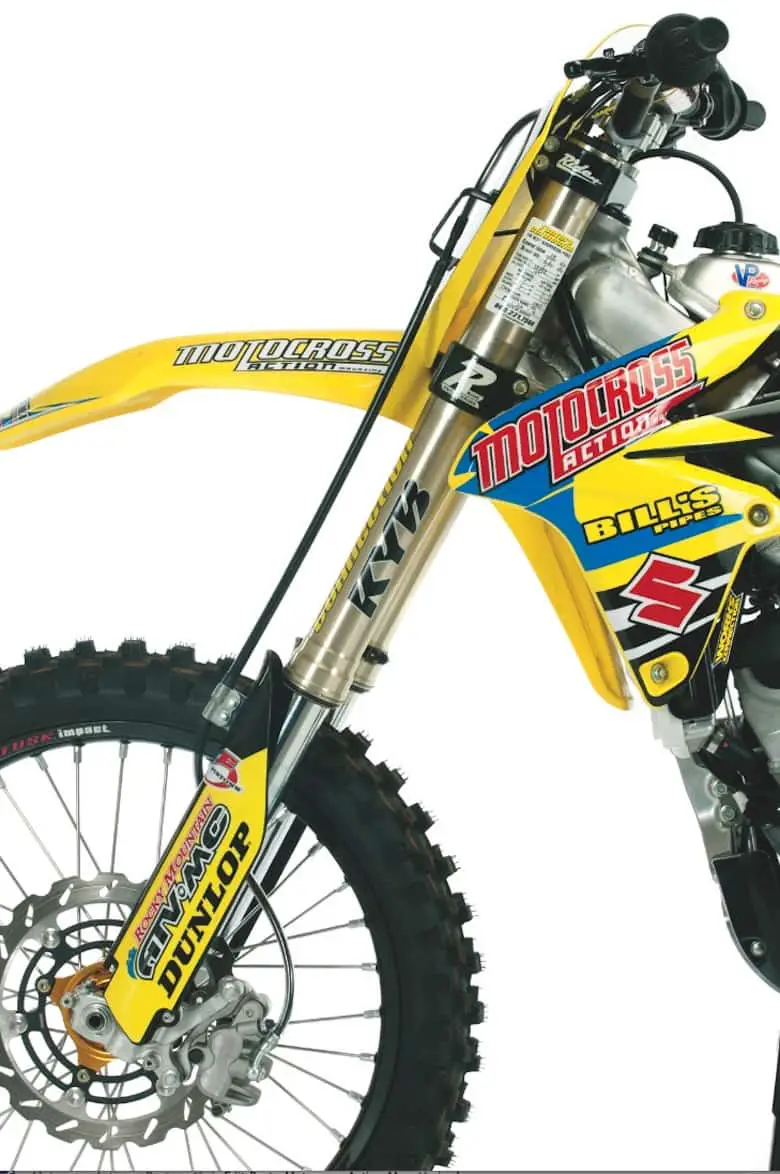
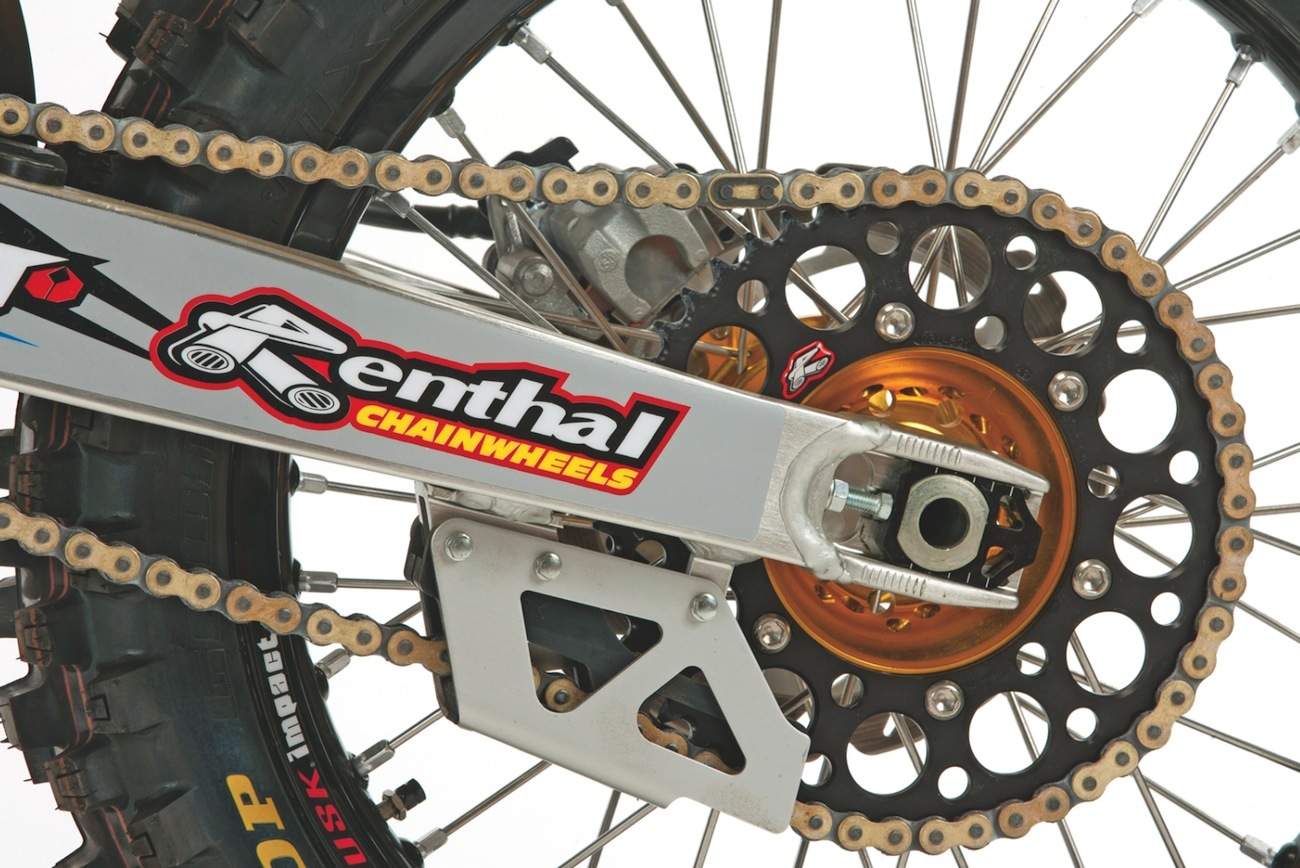
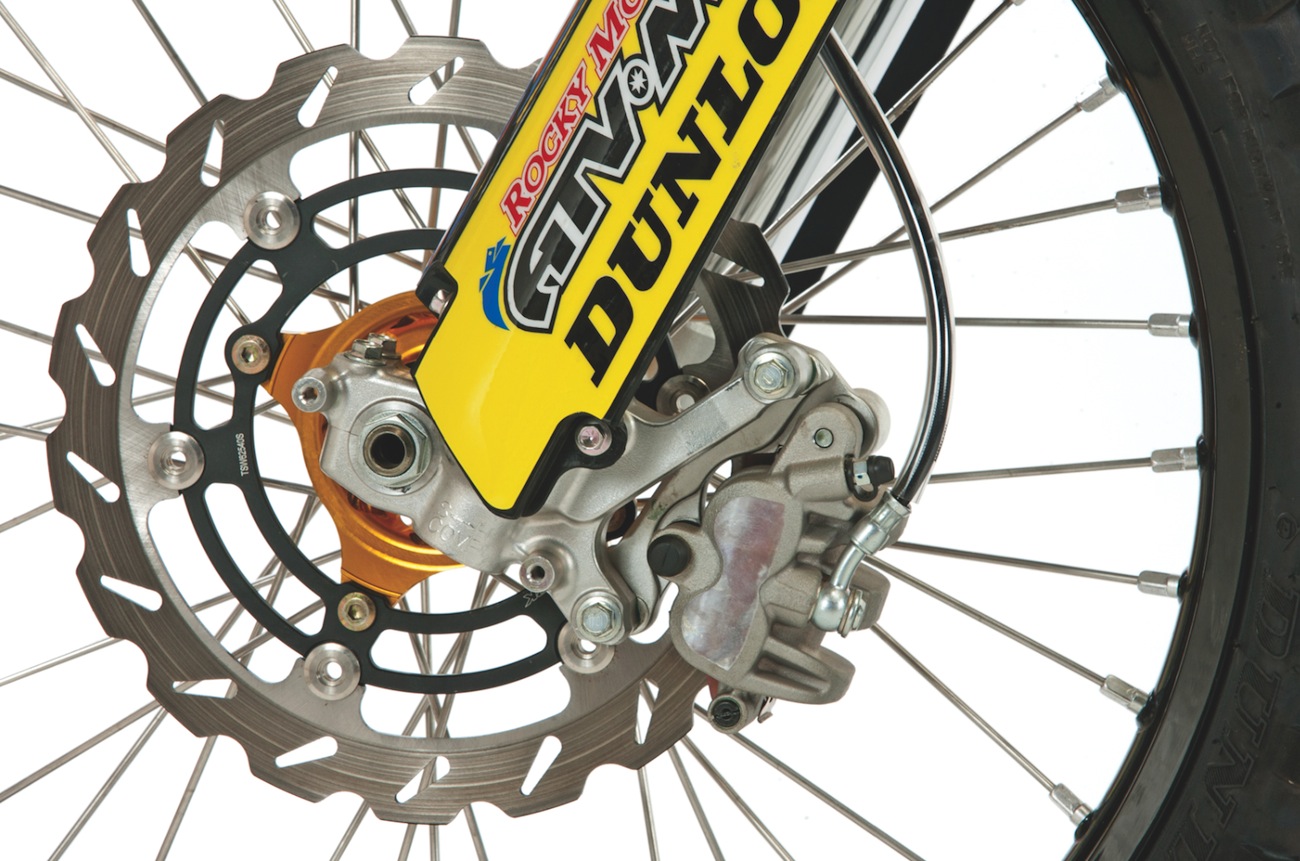


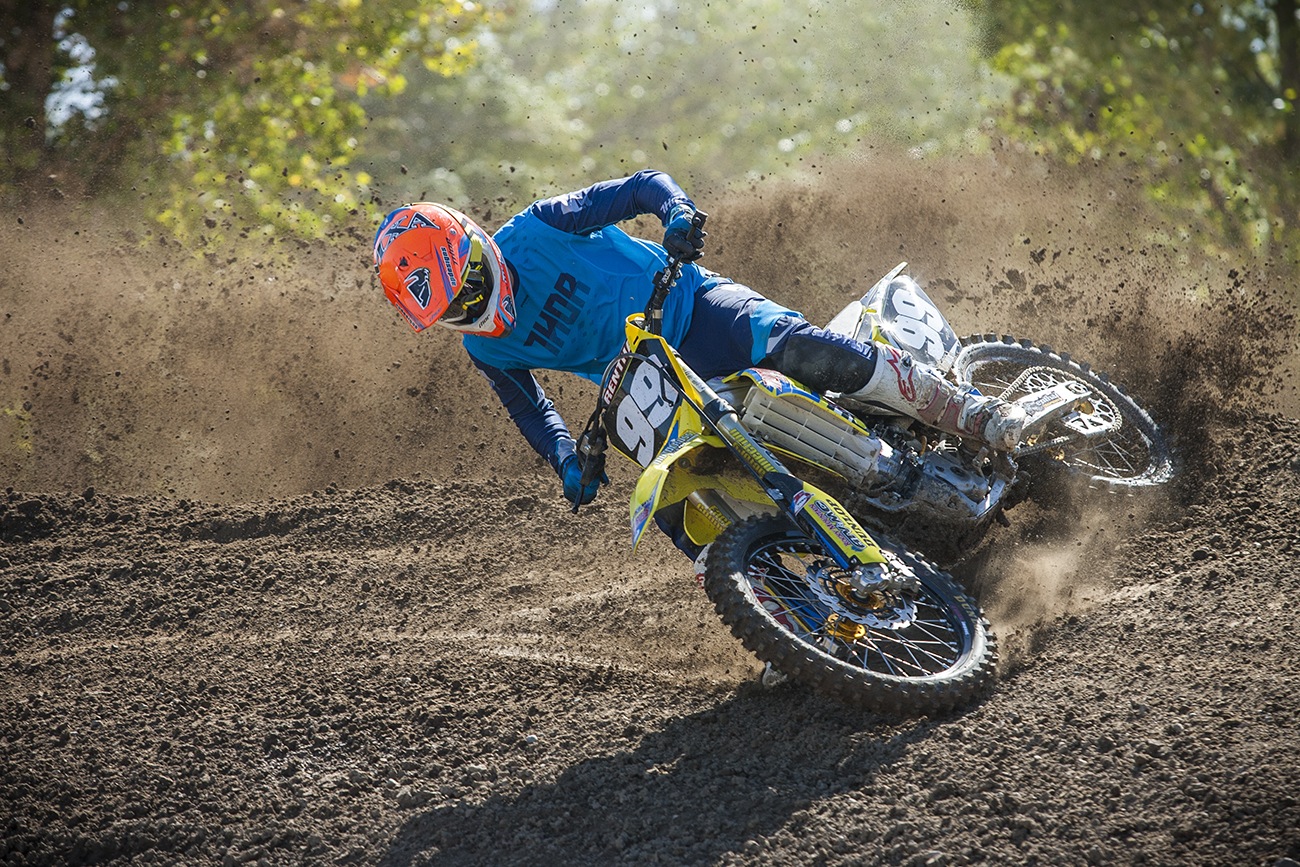




Comments are closed.